All about indoor cypress
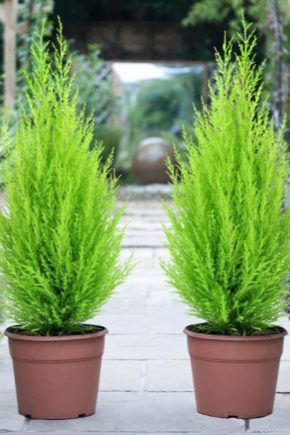
An evergreen coniferous plant from the cypress family grows up to 80 meters in natural conditions. Outwardly, it resembles an ordinary cypress, which makes it easy to confuse cultures. The branches of the cypress are flat, small in size, the crown is pyramidal, like that of a thuja. Cypress trees are native to East Asia, North America. In the 18th century, the process of cultivating the tree as a garden and indoor plant began.

Peculiarities
Indoor cypress trees are small copies of wild fellows that require suitable conditions of detention. They especially need a cold wintering, because of which the plants often die when kept in apartments. Japanese and North American cypress trees are characterized by high frost resistance compared to ordinary cypressdo not require shelter for the winter. The cones of the culture are round, the number of seeds is small, capable of germination in the year of planting, the needles are scaly, pleasant to the touch.
Any types of cypress trees react sharply to dry summer time, they do not tolerate drying of the soil, too low humidity.
Depending on the variety, a flower in a pot may have branches of different shapes and colors. There are varieties with drooping and outstretched branches, needles in blue, green and yellow tones. The trunk of a cypress tree is colored light brown or brown. In young crops, the leaf blade is presented in the form of a needle, and adults have scaly needles.
The compact size of the crop is due to the use of stimulants that inhibit plant growth. After transplanting and arranging the tree in a new place, the plant stretches slightly, the branches grow larger in size, the joints become elongated. With these external changes, the decorativeness of the culture does not change, retaining its pyramidal shape.
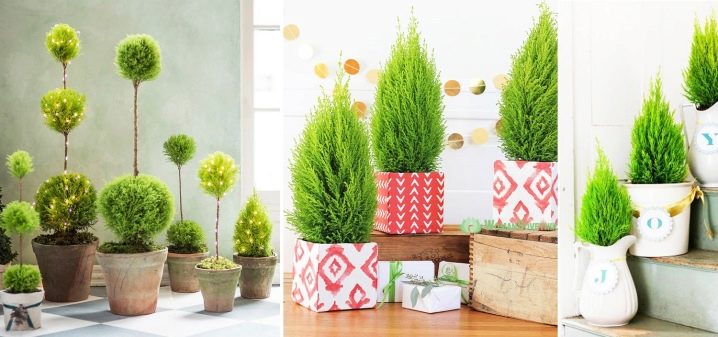
Popular species and varieties
When planting container cypress trees on a garden plot, each variety, with proper care, grows into a large tree with characteristics assigned to it (height, color of needles, crown shape, and so on).
Cypress trees sold in flower shops are not always labeled with their true varietal names. In winter, Lawson's cypress can be sold under the name New Year's. In any case, it is worthwhile to independently diagnose the plant for varietal differences in order to draw up a plan for flower care.
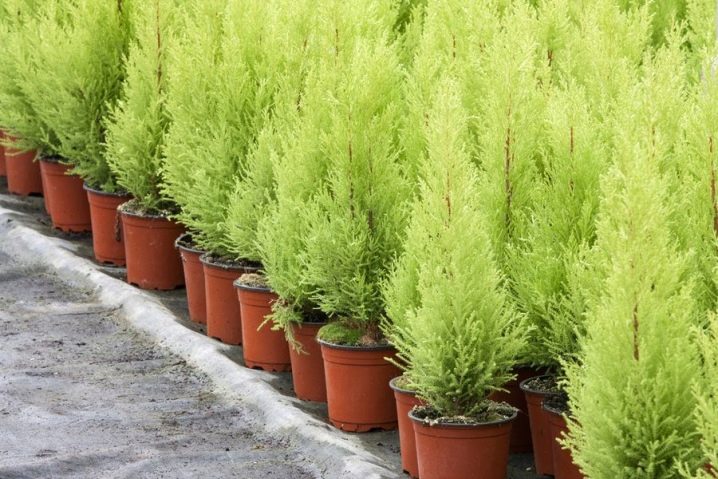
Pea
The cypress is native to the Japanese islands. It grows up to 3000 cm in height, the woody trunk is painted in a reddish range, the crown is conical, the branches are in a horizontal position.
The varieties are as follows.
- Boulevard (Boulevard). Culture with a height of 500 cm or more. The crown resembles a pin in shape. The needles are silvery-blue, the needles at the ends are bent inward. Initially, the culture, being in the container, has a small size and is prone to slow growth, but as the flower matures, growth accelerates, adding up to 10 cm annually.Cypress Bulevard is not a frost-resistant variety, it is advisable to keep it during wintering at a temperature of at least -10 degrees.
- Sangod.
- Nana. Low-growing plant with slow growth. The crown is squat, similar in shape to a pillow. The maximum crop height is 60 cm, even at the age of 60 years, it grows in width to 150 cm.Nana cypress is ideal for growing at home due to its low profile development. Cypress needles have a bluish tint.
- Nana Gracilis.
- Teddy Bear.
- Phillifera. The tree is 500 cm high. The shape is conical. The culture is characterized by a slow growth rate, the needles are grayish-green, the ends of the branches drooping. Since 1861, the plant has been massively cultivated.
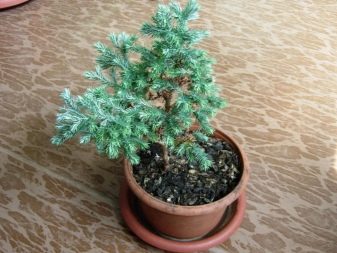
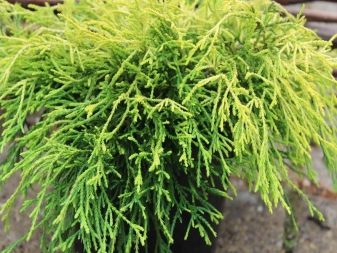
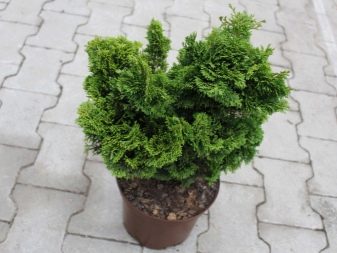
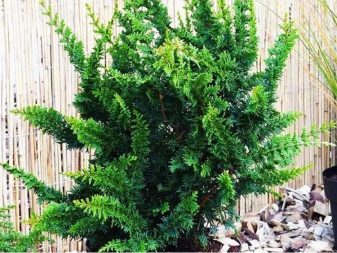
Lawson
Cypress from North America. The height of the tree is 700 cm. The crown is narrowed, the lower branches droop to the ground.
Varieties.
- Blue Surprise. A short plant with a dense pyramidal crown with a narrowed tip, the culture reaches 150 cm in diameter. The bark is colored reddish-brown, prone to cracking. The needles are silver-blue.
- Elwoody. Another dwarf cypress tree, the height of the tree does not exceed 300 cm. The branches are prone to drooping, straight. The needles are bluish. Varieties: Elwood Gold, Pidgemy, White, Pillar.
- Fletchery. Tall crop (8000 cm) with a columnar crown, branches directed upwards, like a poplar. The main feature of the Fletchery cypress is a change in the color of the needles in the autumn, at which time the greenish scales turn purple.
- Yvonne.
- Snow White.
- Aldmigod.
- Globoza.
- Columnaris.

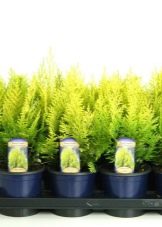
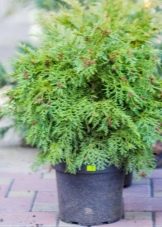
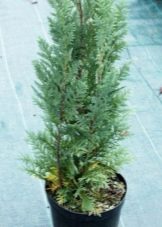
Stupid
Like the pea, this cypress is native to Japan. The maximum plant height is 5000 cm. The branches of the culture are profusely branching, the needles fit tightly to the stems and are covered with stripes.
Varieties.
- Sanderi. Dwarf cypress tree with inhibited growth. Branches of varying thickness, fork-shaped, growing horizontally. The needles are bluish-green, in winter they are painted in red and purple tones.
- Contorta. The cypress is kegle-shaped, the needles are dense, light green.
- Albopicta. Another undersized variety with green needles, the tips of the branches are light yellow. The branches grow horizontally.


Tuyous
Originally from North America. It is considered a low plant (only 2500 cm), the trunk of the culture is narrow, like the crown, the bark is red-brown.
Varieties.
- Red is old.
- Endelaiensis. A dwarf with short dense fan-shaped branches. The needles are green with a bluish tint, oppositely arranged.
- Konica. Slow growing dwarf culture. The shape of the crown is pin-shaped, the needles are blunt, bent downward.
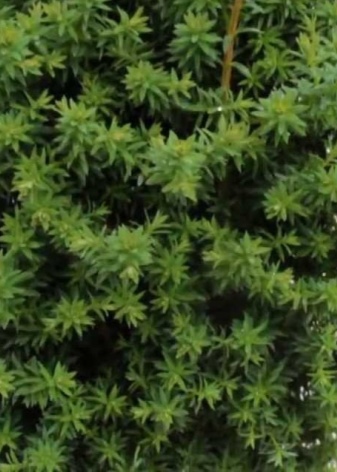

Nutkansky
In another way, it is called the Far Eastern yellow cypress. The plant lives in the coastal strip of the Pacific Ocean. The tall tree is distinguished by a dense crown, exfoliating bark and needles with an unpleasant odor.
The varieties are shown below.
- Pendula (weeping). This variety is resistant to drought and smoke, reaching a height of 1500 cm. The needles are dark green, glossy, small.
- Glauka. Cypress with a narrow, conical crown. The bark is brown with a gray tinge, cracking. The thorny needles are bluish-green. The height of the culture reaches 2000 cm, with a diameter of up to 600 cm.

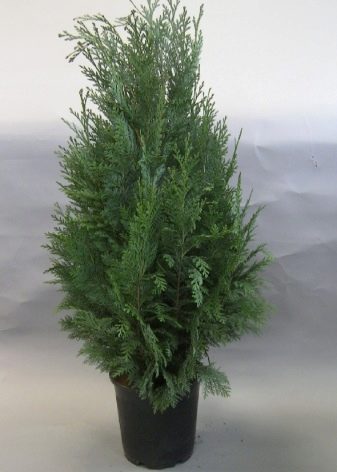
Top Point
Dwarf cypress with a columnar (conical) dense crown. The needles are bluish, pleasant to the touch. In each season of the year, the needles of this variety change their color, in the spring they are silver-blue, in the summer they are green-blue, in the fall they are painted in a copper scale. An adult culture grows up to 150 cm.
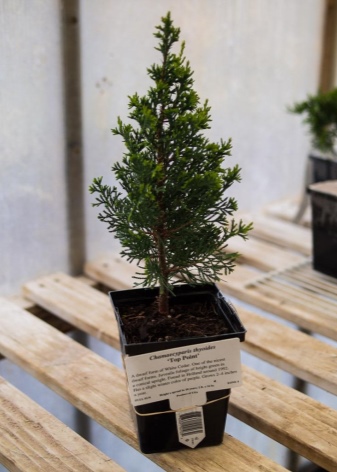
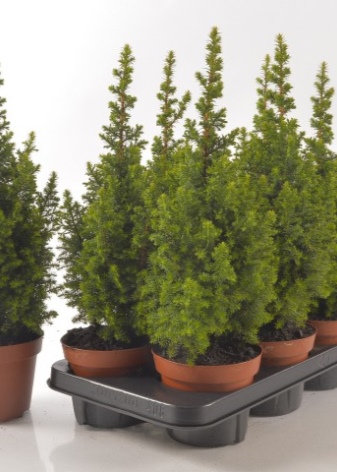
Care rules
Before growing a cypress at home, you should make sure that you can follow the wintering rules, which consist in a particularly low temperature, as well as the location of the flower relative to the cardinal direction. These tips will help preserve the plant until spring and go through the acclimatization period.
Recommendations on how to care for the plant at home.
Temperature regime
In the summer, the flower is kept at a temperature not exceeding 18 degrees Celsius. Like all conifers, this culture requires fresh air, coolness. When kept warm, the plant will die. It is recommended to take out the cypress in the summer to an open, ventilated place: a balcony, a garden, a veranda.In winter, the temperature should be within 10 degrees, a lower temperature is suitable for keeping pea cypress.
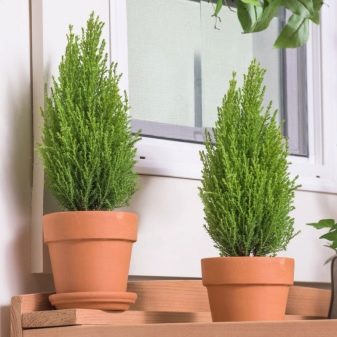

Short-term frosts will not harm the crop, provided that the plant is not in wet soil.
Lighting
The plant requires bright diffused lighting. In a hot period, it is recommended to shade the culture. In winter, the cypress is kept in a lighted place, it can be placed on the southern windows, but away from heat sources.
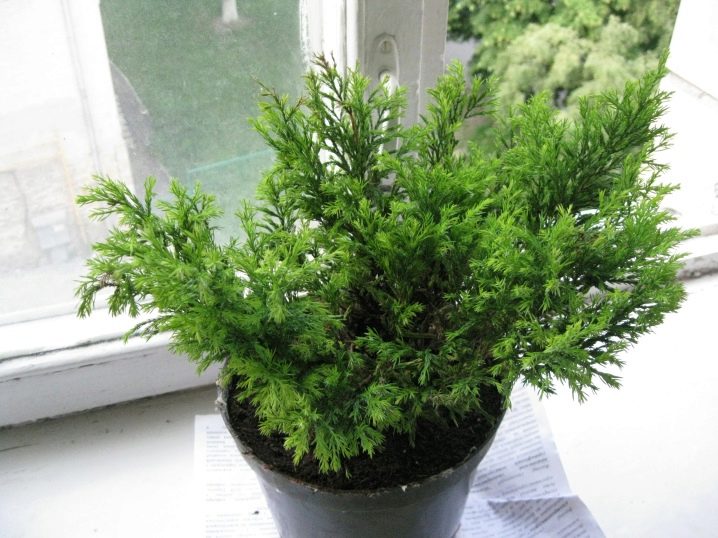
Watering
It is recommended to water the plant as the top layer of the soil dries out, it is desirable that the substrate in the container never dries out, but it is not flooded either. Complete drying of the earthen coma leads to the death of the plant. In summer, watering is plentiful, in winter it is reduced. When the air temperature rises to 20 degrees Celsius and above, watering can be carried out several times a day (taking into account the size of the container and the tree). Water is applied at room temperature, clean or settled for 3-4 days, soft.

Earth
Cypress trees are planted in a loose, moisture-consuming and breathable substrate. The soil should be nutritious, slightly acidic or neutral. It is permissible to use a special ready-made soil mixture for conifers. If the substrate does not contain peat, then this element should be added to the soil in a ratio of 1/5 of the peat to the entire volume of the earth.
For self-preparation of the potting soil you need:
- humus;
- leafy land (or coniferous);
- peat;
- sand (washed).
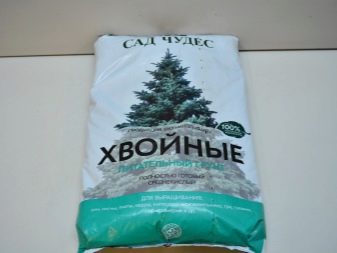
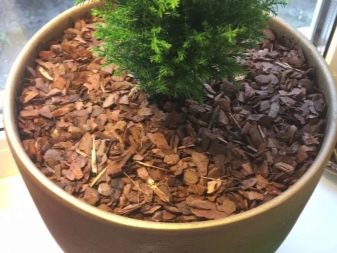
Top dressing and fertilizers
Cypress should be fertilized exclusively in the summer season, the substances are applied monthly. You can feed the plant with special ready-made mineral liquids for indoor flowers, mixtures for coniferous crops, granular substances. Nutrients are diluted in water with a concentration several times lower than indicated by the manufacturer, or added directly to wet soil.
The main task is not to overfeed the plant, excess fertilizers cause chemical burns of the root system, leading to the death of the cypress.
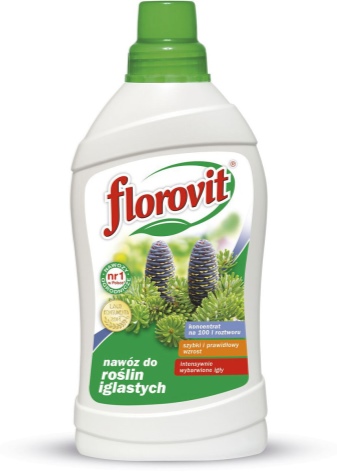

Humidity
Only adult plants are resistant to dry air. Young crops need high humidity. The creation of suitable conditions occurs through constant spraying of the cypress with warm, soft water or placing a container with liquid near the flower. In winter, procedures are not carried out in order not to contribute to the development of fungal infections. Another way to maintain moisture is to place the culture pot on a tray with wet pebbles or a moisture-consuming substrate.
Water procedures in the form of bathing are performed once a week, with the obligatory cover of the soil from the ingress of excess moisture.
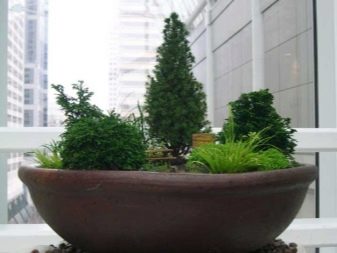
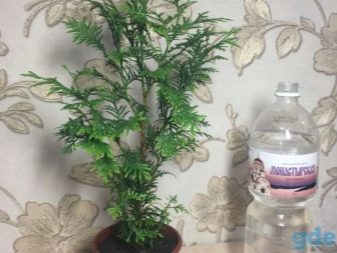
Shaping and pruning
Cypress trees themselves branch well and do not require formative pruning. To give a unique shape to the crown of the plant, pinch the tops of the shoots. To preserve the decorative appearance, it is necessary to remove all dried branches.
Important: the needles are never trimmed. Cut off needles lead to drying and death of stems and branches.
Also, the plant does not require support. If the plant is grown from seed, at first the young individual can be tied to a support in order to avoid the curvature of the trunk due to the placement of the crop near one light source.
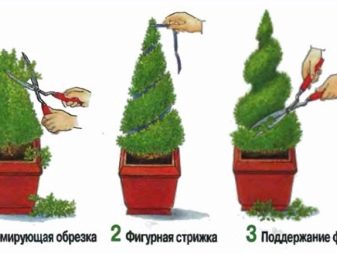

Seed propagation
It is quite difficult to grow a cypress from seeds, and this method is mainly used by breeders. If, however, there are seeds available, then they must be dried at a high temperature and transferred to a container with a tight-fitting lid. Under these conditions, the seeds do not lose their properties for 20 years.
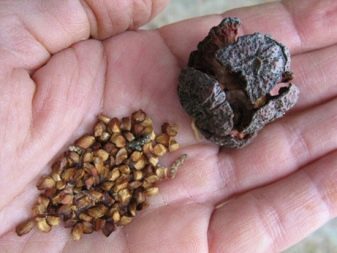

How to transplant it?
The culture should be transplanted in the spring. To transplant a plant, it is worth taking into account the factor of strongly growing plant roots, damage to which can lead to a deterioration in the condition of the cypress in a new place and prolong the adaptation period.
Planting in a new pot of indoor crops occurs a few weeks after buying a flower. The transplant is carried out in a container that is suitable in size and shape to the cypress root system and filled with fresh nutrient substrate. It is not recommended to remove the old earthen ball, as well as to try to untangle the roots.It is necessary to place the culture in a new container using the transshipment method.
After transplanting, the soil is moistened.
The cypress is transplanted in the future only after the roots of the earthen coma are completely entwined.
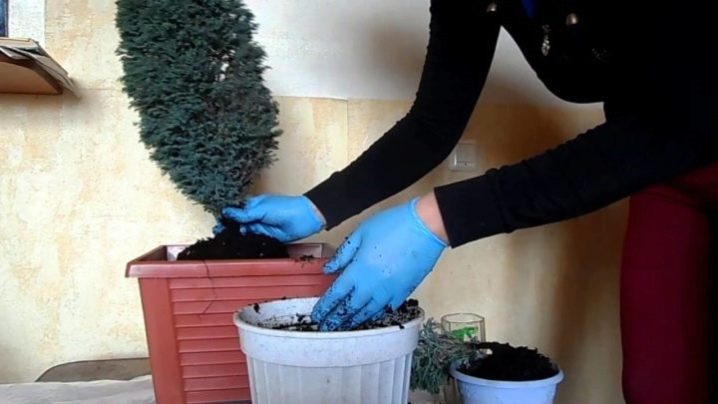
Diseases and pests
Due to the difficult maintenance of conifers in indoor conditions, cypress trees are susceptible to the development of infectious and other diseases. The most common problems are associated with drying out of the plant. Let's take a closer look at pests and ways to save a culture.
Needle problems
As a rule, the needles dry out and turn yellow due to a lack of nutrients or dry soil, low humidity. To stop the drying process of the needles, it is recommended to revise the plant watering system, add additional sources of liquid to increase moisture, or increase the number of sprays per day. Transplant the culture into fresh soil or fertilize the old soil.
If these steps are performed, but the needles continue to dry along with the branches, then it is necessary to check the cypress for mechanical damage to the branches or stop the formative pruning.
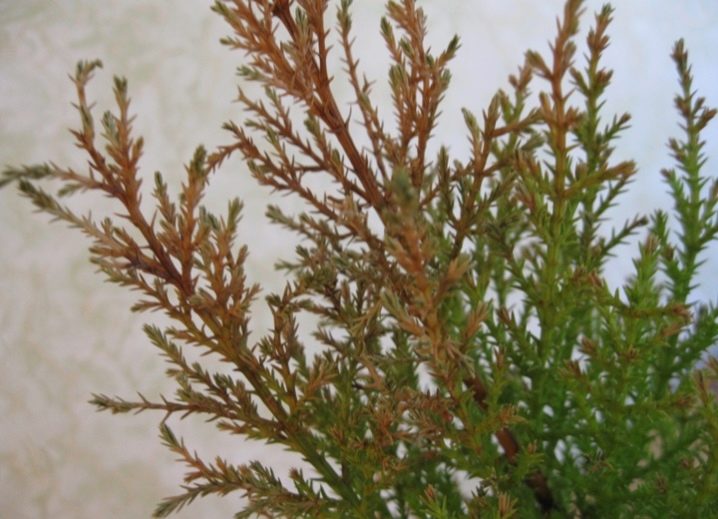
Decay of the root system
If this ailment occurs, the plant should immediately be transplanted into a new container, after wrapping the old earthen lump with towels to remove excess water and cut off the damaged areas of the roots. Sprinkle the wounds with charcoal. Fresh soil on the first day after transplanting should not be moistened if there is still moist soil around the roots.
In the summer, a cypress can pick up a spider mite, a scale insect. Insects feed on plant sap. At the first signs of the appearance of mealy and sticky blooms, small moving brown bugs, the culture is placed away from all plants and treated with a suitable insecticidal preparation in several passes to save it from the disease.
But insect infestation of conifers is extremely rare.
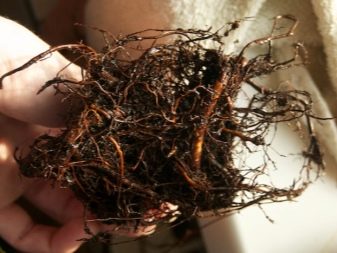
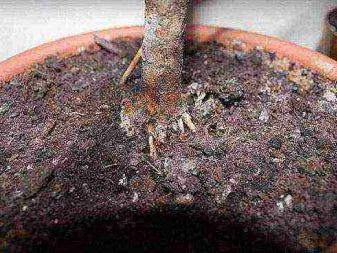
For homemade cypress, see the next video.































































The comment was sent successfully.